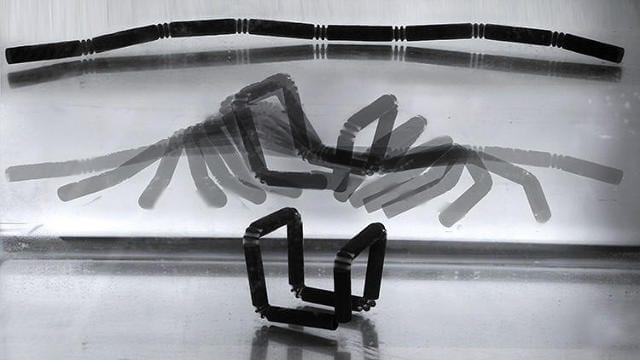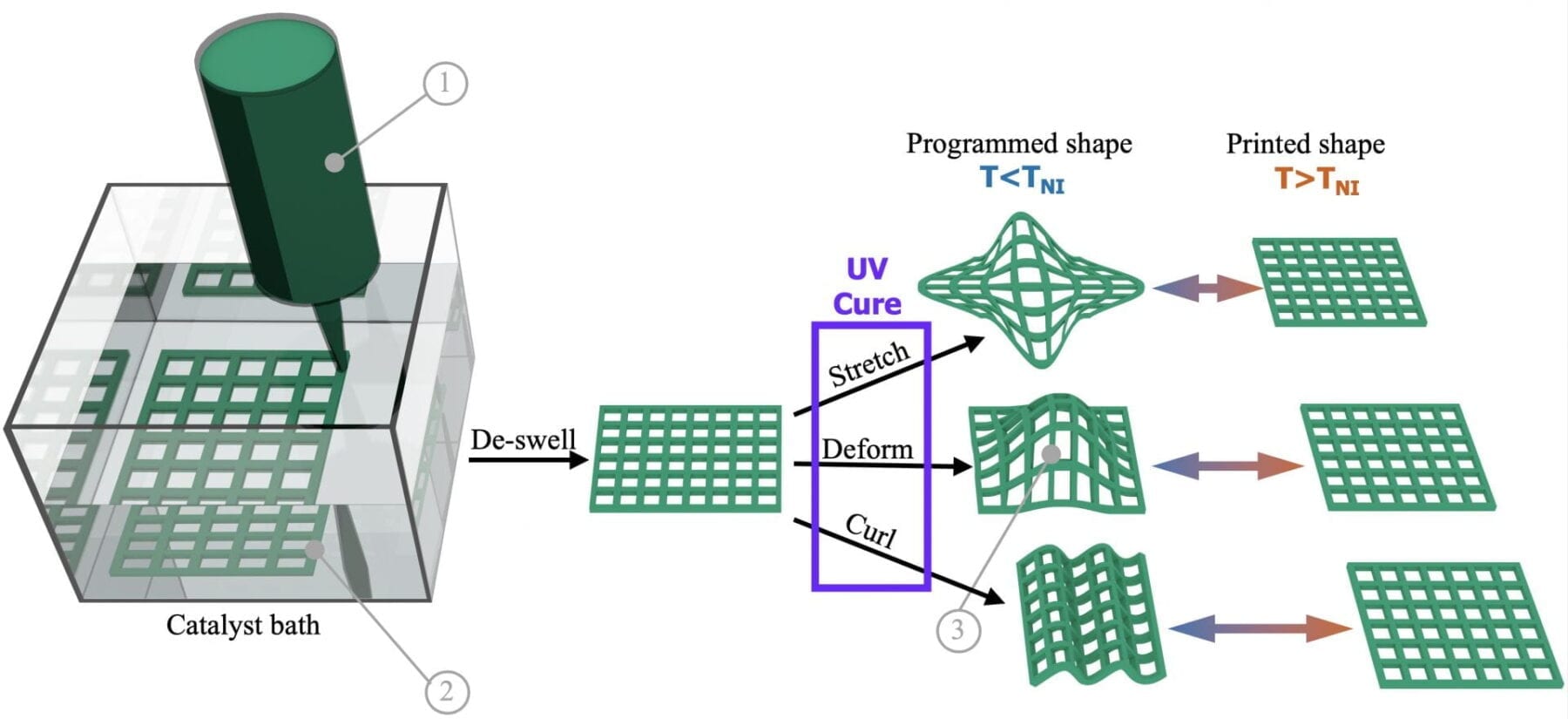
Once we can control any material—from metal to wood to plastic—static objects will become a thing of the past.
Plants moving toward the sun, proteins folding into complex structures in response to their surroundings, molecules stacking themselves together to form a crystal. No external machinery directs these functions. Instead, the structure and shape is embedded in the material properties themselves—a wonder of the natural world.
One day, we may create materials to respond to their environments in similar ways, unlocking a new realm of possibilities for building and design: technologies, products, and infrastructure that are adaptable, efficient, and less prone to costly errors. Imagine smart materials that deliver drugs inside your body just when they’re needed, furniture that assembles itself at your house, or car tires that alter their grip when the road is wet.
“We believe it’s now possible to program nearly every material to change shape and properties,” says Skylar Tibbits, director of MIT’s Self-Assembly Laboratory. Code, he says, will become the “language of materials” in the same way it is the language of machines today.
Tibbits, an architect-turned-computer scientist-turned-mad designer, is at the forefront of popularizing the idea that smarter materials—as much, if not more than, ever-more-complicated machines—will shape the physical world of the future. In a 2013 TED Talk, he introduced a part of this vision by calling it 4-D printing (i.e., 3-D printing with the addition of the dimension of time). Since then, he’s been working to make the idea a reality using real-world materials that manufacturers and product designers use today: wood, textiles, carbon fiber, and more.
An example might help you understand the concept. Tibbits has created a composite wood material that he can 3-D print in flat sheets with customized grains. Depending on the grain pattern, the wood will fold in different ways when water is added. One day, you could get a chair flat-packed shipped, and it could fold itself on arrival.
Research like this is at an early stage, but to Hod Lipson, director of Cornell University’s Creative Machines Lab, it represents a new frontier for product design and manufacturing. First, he says, we’ve created the ability to control the shape of a material via 3-D printers, but one day, we’ll be able to control the properties of materials themselves and, eventually, how those materials behave.
Read more: Physical Objects Are About To Become As Programmable As A Computer
The Latest on: 4-D printing
[google_news title=”” keyword=”4-D printing” num_posts=”10″ blurb_length=”0″ show_thumb=”left”]
via Google News
The Latest on: 4-D printing
- Rare $1 bills with printing error could be worth thousands: 'They're still out there'on April 27, 2024 at 2:00 am
Due to a printing error made by the U.S. Bureau of Engraving and Printing, you might have a rare dollar bill on hand that's worth thousands of dollars — check your wallets.
- How to Identify a Rare Printing Error on a Pair of $1 Bills That Could Fetch Thousandson April 26, 2024 at 11:32 pm
Under the right conditions, with matching serial numbers and specific criteria, currency collectors are eager to pay anywhere from $20,000 to $150,000 for a pair from these limited batches. However, ...
- Pair of $1 bills with same printing error could be worth thousands. How to checkon April 26, 2024 at 7:06 pm
Currency collectors may be willing to pay up to $150,000 if you have two $1 dollar bills with the same printing error, according to Wealthynickel.com.
- 3D Printing Market worth $37.4 billion by 2029 - Exclusive Report by MarketsandMarkets™on April 22, 2024 at 7:15 am
The 3D Printing market is projected to grow from USD 17.5 billion in 2024 and is estimated to reach USD 37.4 billion by 2029; it is expected to grow at a Compound Annual Growth Rate (CAGR) of 16.4% ...
- UltiMaker launches Factor 4 3D printer 'built for factory floor'on April 22, 2024 at 2:35 am
The direct drive dual extrusion-based platform is designed for ‘light industrial applications,’ which the desktop 3D printing leader describes as end use parts, functional prototypes, and small batch ...
- UltiMaker Launches Factor 4: Reliable and Repeatable 3D Printing for Industryon April 19, 2024 at 8:51 am
As you might expect, the Factor 4 is directly integrated into UltiMaker’s wide materials ecosystem. From UltiMaker Cura, operators can directly access print parameters for a wide variety of third ...
- Formlabs unveils next-generation Form 4 3D printer serieson April 17, 2024 at 6:01 am
The company says the Form 4 and Form 4B printers will ‘set a new standard’ with its new proprietary Low Force Display (LFD) print engine.
- Formlabs Debuts Form 4 Series: 3D Printing with Enhanced Speed and Reduced Costson April 16, 2024 at 8:51 am
Formlabs CEO and co-founder Max Lobovsky explained: ...
- ELEGOO Saturn 4 Series Transforms Consumer 3D Printing With Breakthrough Speed And Intelligenceon April 15, 2024 at 5:38 pm
After decades of development, 3D printing has emerged as a transformative force. ELEGOO, a leading player in the 3D printing industry, is at the forefront of this revolution. Read more about them here ...
- Elegoo launches new Saturn 4 Ultra and Saturn 4 resin 3D printerson April 15, 2024 at 7:47 am
D printer technology continues to advance at a rapid rate, both in the FDM and resin worlds. One of the… Continue reading Elegoo launches new Saturn 4 Ultra and Saturn 4 resin 3D printers The post ...
via Bing News










